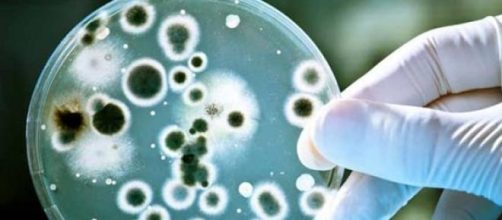Candida albicans defines a group of toxic microorganisms, a type of yeast that inhabits the mouth, throat, intestines and urinary tract. Normally, our intestinal tract's microflora is in constant balance with other bacteria. But when, for various reasons, the bad bacteria multiply, the natural microflora can no longer control it and the
symptoms start to appear: gastrointestinal disease, vaginitis, herpes, muscle pain, stomatitis and mouth thrush, kidney infections, depression, fatigue, anxiety and even diabetes. Also, yeasts can transform into fungi and fix themselves into the intestinal walls, modifying their pattern into porous surfaces and allowing toxins to enter the blood stream,
weakening the immune system and wreaking havoc in the body.
The most common
causes of Candida are improper diet, weakened immune system, long use of antibiotics, steroids or birth control pills. Untreated, it worsens over time, causing serious disorders of the digestive tract, colitis, ulcers
and even colon cancer.
In order to treat candida you can follow this four steps:
1. Detoxification: any treatment for Candida must begin with a cleansing of the entire body, especially the colon. This means adequate consumption of water, fresh juices, fruits and herbal teas with antimicrobial properties, such as black walnut, clover, cloves, lavender, gentian, wormwood, St. John's wort, chamomile.
2. Reducing the population of yeast: use anti-fungal herbs and phytochemicals. The most powerful and efficient are oregano oil, grapefruit seed extract, garlic pills, tea tree oil. It is important to use at least 2 or 3 anti-fungals. The cure should last 2 weeks followed by a 5 days break. You can repeat this 14/5 cycle if necessary, but it is very important to take the break, in order to prevent yeast to modify and to develop a resistance to treatment.
3. Consumption of probiotics: include in your diet bifidus and acidophilus. These friendly bacteria will fight against yeast population and repair the intestinal walls.
4. Diet: this is maybe the key factor in the fight against candida, a bacteria that feeds on sugars and simple carbohydrates. No matter how effective the treatment is, it will never be strong enough to kill the yeast, if we continue to feed them. This diet requires a lot of goodwill and means complete exclusion of products containing sugar, glucose, fructose, lactose, dextrose, etc. Dairy and pasta, sweets, gluten, fermented foods, alcohol, vinegar, sweet fruits, honey are also prohibited.
Include in your daily meals vegetables, yogurt with live and active cultures, sour apples, rice, eggs, oat bran, green algae (spirulina), berries, fish, lean meat. This diet is very strict but also very necessary and should be followed for at least 3 months in order to see good results. Once the symptoms disappear, you can extend the list of allowed products, but do it gradually, to avoid a relapse.

